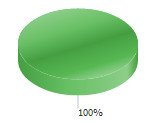Some more 12c articles have trickled out over the last few days.
- Temporal Validity in Oracle Database 12c Release 1 (12.1)
- Fine-Grained Access to Network Services Enhancements in Oracle Database 12c Release 1
- External Table Enhancements in Oracle Database 12c Release 1 (12.1)
- SQL*Loader Enhancements in Oracle Database 12c Release 1 (12.1)
I kind-of mentioned this next thing in a post a few weeks ago, but didn’t name names. 🙂 While writing an article about the PDB logging clause in 12.1.0.2 I noticed it didn’t work. I raised an SR with Oracle Support and they confirmed it was a bug. I was not planning to release the article until the bug was patched, but it came up in conversation recently and I decided it was better to release the article with a big fat warning on the top saying it doesn’t work, just so others are not as confused by this as I was. I’m still not sure it is the right thing to do, but what the heck…
When the bug is patched, I will revise the article and probably promote it to the front page of the website as a “new article”. For now it is lurking in the depths of my website. 🙂
The 12c journey continues…
Cheers
Tim…
